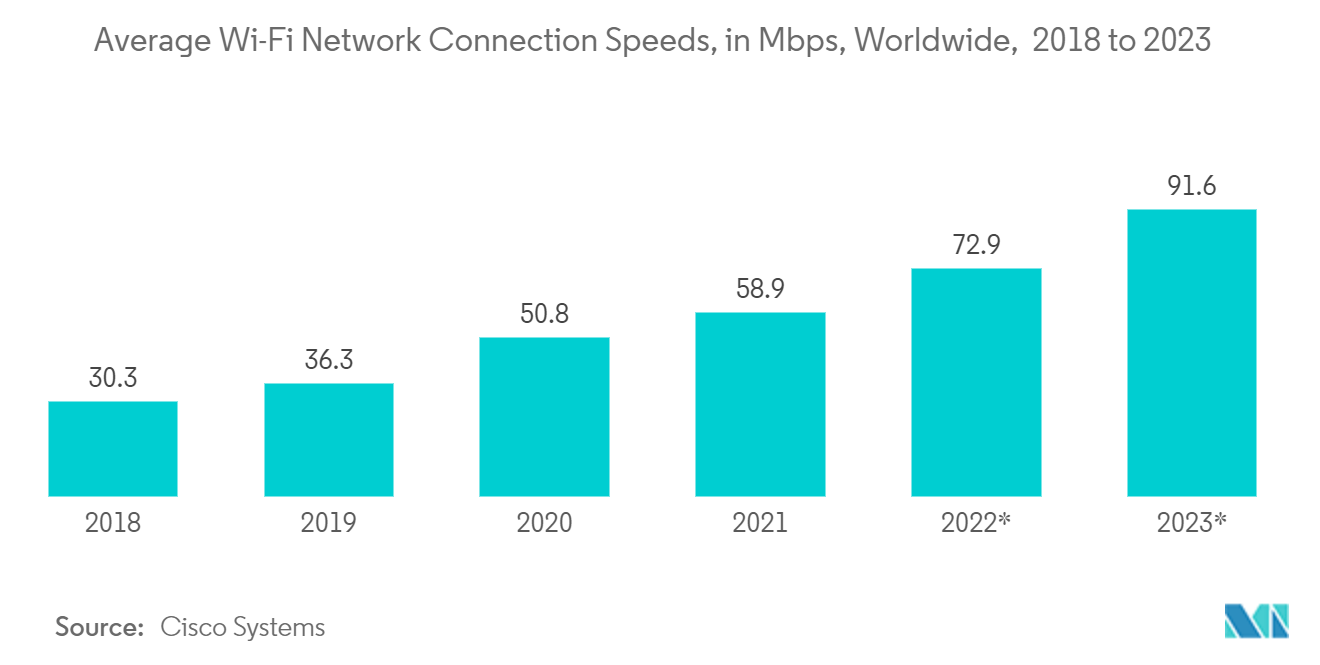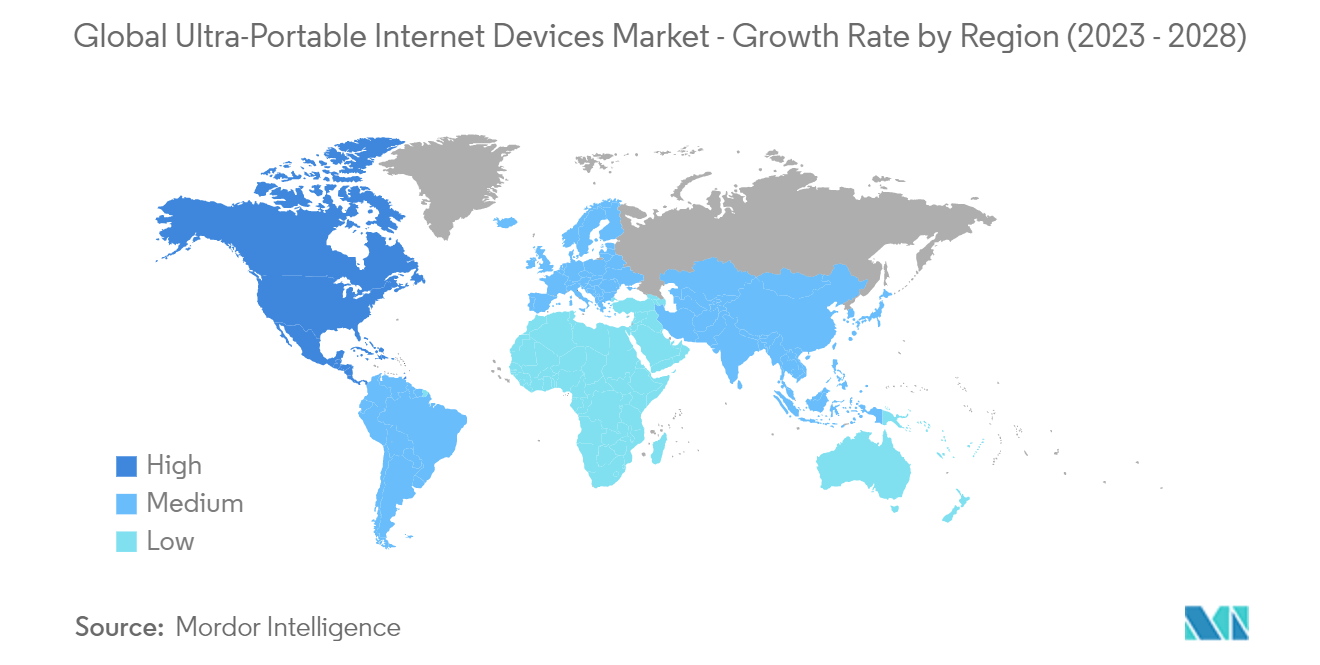Market Trends of Ultra-Portable Internet Devices Industry
This section covers the major market trends shaping the Ultra Portable Internet Devices Market according to our research experts:
Increasing Demand for Portable Gadgets and Improved Internet Connectivity
- According to the International Telecommunication Union, global bandwidth use increased from 719 Tbit/s in 2020 to 932 Tbit/s in 2021. This represents a 30% gain and follows a rise similar to the one from the previous year. The Asia-Pacific region has the greatest regional total for the use of international bandwidth at over 400 Tbit/s, which is twice as high as that of Europe (204 Tbit/s) or the Americas (180 Tbit/s).
- Verizon expects to have incremental 5G bandwidth via the latest spectrum available to 100 million people in the starting 46 markets. Over 2022 and 2023, coverage is likely to increase to more than 175 million people. By 2024, when the remaining C-Band is cleared, greater than 250 million people are expected to access Verizon's 5G connection on the C-Band spectrum. Low latency in 5G connection drives the market as latency is when it clutches for data from one device to be uploaded and reaches its target. With 4G networks, the user looks at an average latency of around 50 ms, dropping to 1 ms with 5G technology.
- In December 2022, to improve internet connectivity in distant areas of the country, the UK government tested Elon Musk's Starlink, which employs satellites to beam a broadband signal to Earth. According to the government, the recent test showed that Starlink satellites could give internet rates of up to 200 megabits per second in many regions, four times faster than the UK average broadband speed of over 50 Mbps. The government continued to evaluate the system's capability and other solutions and services from various vendors.
- According to Cisco Systems, from 2020 to 2023, fixed broadband internet speeds are predicted to improve by nearly 50 Mbps, finally reaching 110.4 Mbps. During the entire period from 2018 to 2023, the compound annual growth rate is expected to reach 20%. The average speed in 2020 was 50.8 Mbps, representing a nearly 40% increase over 2019. It was predicted to rise by 16% from 2020 to 58.9 Mbps in 2021.
- The rising demand for portable electronics such as smartphones, laptops, tablets, and wearable gadgets propels the industry forward. These devices provide more convenience, portability, and connectivity, making them crucial to many people's everyday lives. Furthermore, technological improvements have led to the development of more sophisticated and user-friendly devices, which has increased the demand for portable electronics. The rise of online services such as cloud computing and e-commerce has also led to the increased use of mobile devices, which allow users to access these services at any time and from any location.

Asia-Pacific to Witness the Fastest Growth
- According to the Economic Survey of India 2021-22 published by the Ministry of Finance, Government of India, the country's internet user base crossed 830 million in 2021, growing by over 530 million in the six years since 2015. India's total volume of wireless internet data usage surged over 7x to 32,397 petabytes in 2021 from around 4,200 petabytes in 2018. A huge internet base would create an opportunity for the market studied to grow by developing new products to capture the market share.
- Furthermore, the government's drive to digitize their country's education system is functioning as a spur for the ultra-portable internet gadget industry. For example, the Indian government launched the 'Kaushal Bharat, Kushal Bharat' project. With this effort, the government has set a goal of training 400 million persons by 2022 so that they can find work. These new initiatives include the Pradhan Mantri Kaushal Vikas Yojana (PMKVY), the National Strategy for Skill Development and Entrepreneurship 2015, the Skill Loan Scheme, and the National Skill Development Mission. Such government initiatives necessitate a computerized education system, which will generate a demand for ultra-portable internet devices over the forecast period.
- Moreover, the market for ultra-portable internet devices in China is witnessing new product launches. For instance, Quectel Wireless Solutions, a global supplier of IoT modules, recently partnered with China Mobile and Dianyi to demonstrate a 5G USB dongle based on Quectel 5G module RG500Q at the 25th GTI Workshop. Compliant with 3GPP Release 15 specifications and capable of both 5G standalone (SA) and non-standalone (NSA) modes of operation, the newly launched 5G device is designed for industrial IoT, smart city, smart home, training and education, and intelligent logistics applications.
- The region is witnessing huge investments in 5G implementation. For instance, the Australian government invested USD 14.3 million in grants to support various enterprises integrating 5G technologies. Also, the Singaporean government invested SGD 25 billion (USD18.1 billion) in R&D funding until 2025 to drive transformative technologies supporting efforts to maximize the benefits of digitalization. This may drive the demand for 5G ultra-portable internet devices over the forecasted period.
- In addition, in modern educational institutions, wireless connectivity is becoming as essential as pen and paper. Reliable, fast, secure, and convenient internet allows teachers to access resources that promote more effective learning and development. Moreover, it also provides students unlimited access to information to enrich their education. Such factors further boost the demand for wireless routers in education institutions to create internet-enabled campuses that allow students and teachers to access a great amount of information over the internet.


